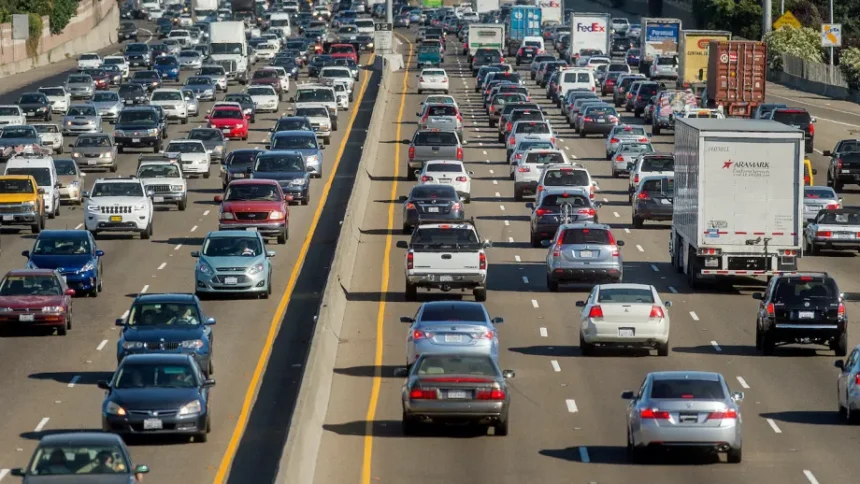Introduction to the Traffic Situation on 880
Traffic woes on the I-880 have become a familiar struggle for commuters in Davis and San Leandro, CA. With rush hour delays seemingly etched into our daily routines, it’s hard not to feel the tug of frustration as you sit bumper-to-bumper. What causes these persistent jams? And how are local authorities addressing this ongoing challenge? In today’s blog post, we’ll dive deep into the current traffic situation on 880, uncover its root causes, and explore what residents can expect moving forward. Whether you’re a daily commuter or just passing through, staying informed about the latest updates is crucial to navigating these busy roads smoothly. Let’s get started!
Causes of Congestion and Delays on 880
The 880 corridor is notorious for its congestion, and several factors contribute to this ongoing issue. One of the primary causes is sheer volume. With thousands of vehicles using the highway daily, bottlenecks are inevitable.
Construction projects also play a significant role in delays. Ongoing road work can reduce lane availability, causing backups that ripple through traffic patterns.
Accidents further exacerbate the situation. A single incident can halt traffic for miles as emergency services respond and lanes become blocked.
Additionally, weather conditions like rain or fog can slow down drivers significantly. Visibility issues lead to more cautious driving behavior, contributing to slower speeds statewide.
Peak commuting hours amplify these challenges. Mornings and evenings see an influx of cars as people travel to and from work, creating rush hour chaos along 880.
Efforts to Improve Traffic Flow
Local authorities are actively working on solutions to alleviate traffic congestion along the 880 corridor. Recent initiatives involve expanding lanes and enhancing existing road infrastructure to accommodate increasing vehicle volumes.
Innovative traffic management systems have also been introduced. These smart technologies adjust signal timings based on real-time conditions, reducing idle time at intersections.
Community engagement is a key part of these efforts. Public forums allow residents to voice their concerns and suggest improvements that can directly impact their daily commutes.
Additionally, collaborations with regional transportation agencies aim to develop comprehensive plans for future upgrades. This includes dedicated carpool lanes aimed at encouraging ridesharing among commuters.
Investment in public transit options is another critical focus area. Enhancing bus services and integrating light rail systems promise to offer more alternatives for those looking to avoid congested roads altogether.
Impact on Local Residents and Businesses
The traffic situation on 880 has created challenges for many residents in San Leandro. Daily commutes have become longer, impacting work-life balance and adding stress to routines.
Local businesses also feel the pinch. Customers may avoid certain areas due to congestion, leading to decreased foot traffic. This drop can hurt sales and disrupt operations, especially for small enterprises that rely on local patrons.
Moreover, noise and air pollution from idling vehicles affect nearby neighborhoods. Families find it harder to enjoy outdoor spaces or let kids play safely in their yards.
As the flow of people changes, community engagement diminishes too. Events may attract fewer attendees as travel becomes a hassle.
Residents are voicing concerns about safety as frustrated drivers navigate congested roads more recklessly. The sense of frustration is palpable among those who call this vibrant area home.
Tips for Navigating 880 Traffic
Stuck in 880 traffic? Here are some tips to make your journey smoother.
Consider adjusting your schedule. Traveling during off-peak hours can save you a lot of time. Early mornings or late evenings often see fewer vehicles on the road.
Utilize real-time traffic apps. Tools like Waze or Google Maps provide instant updates about accidents and delays, helping you choose alternate routes before you’re caught in congestion.
Stay alert for construction signs. Knowing where work zones are located helps avoid unexpected slowdowns.
Keep an eye on local news stations for updates on major incidents affecting the highway. They often report live from the scene, giving you insights into what to expect ahead.
Be patient and stay calm behind the wheel. Stressing out won’t change traffic conditions but maintaining composure can lead to safer driving experiences.
Alternative Routes and Transportation Options
When navigating the congested 880 corridor in San Leandro, exploring alternative routes can save time and frustration. Consider using local streets like Hesperian Boulevard or East 14th Street. These roads often provide a smoother drive during peak hours.
Public transportation is another great option. AC Transit offers bus services that connect various neighborhoods to key areas without the hassle of driving. BART stations nearby also make commuting easier for those heading toward Oakland or San Francisco.
Cycling is gaining popularity too. With dedicated bike lanes being developed, cycling not only helps avoid traffic but promotes a healthier lifestyle as well.
Rideshare services are convenient if you prefer not to drive at all. Options like Uber and Lyft can help you reach your destination while someone else deals with the road ahead.
With these alternatives, residents have choices beyond just sitting in traffic on 880 every day.
Future Plans for Improving 880 Traffic
Future plans to enhance traffic flow on the 880 corridor are gaining momentum. Local authorities and transportation agencies are collaborating to address congestion issues effectively.
One major initiative involves upgrading existing infrastructure. This includes widening lanes and improving intersections to accommodate increased vehicle volume. Smart technology is also being integrated, with real-time traffic monitoring systems set to be implemented soon.
Additionally, there’s a push for expanding public transit options. By increasing bus frequency and developing new routes, officials aim to reduce the number of cars on the road.
Community feedback is crucial in this process. Town hall meetings invite residents’ opinions on proposed changes, ensuring that local needs shape future developments.
These efforts signify a commitment from city planners to create a smoother travel experience along one of California’s busiest highways. The focus remains not only on immediate fixes but also sustainable long-term solutions for all commuters.
Conclusion: Staying Informed and Prepared for Changes
Staying informed about the traffic situation on 880 is crucial for anyone commuting in and around Davis, San Leandro, and neighboring areas. Traffic updates via local news sources can help you adjust your travel plans.
Being proactive means checking real-time apps or websites that provide live updates on traffic conditions. This practice allows drivers to avoid bottlenecks and minimize delays.
Preparation can make a significant difference in daily commutes. Familiarizing yourself with alternative routes ensures you’re not trapped during peak hours. Exploring public transportation options could also ease congestion while offering a greener choice for travel.
As discussions continue about improving infrastructure along 880, remaining engaged with community initiatives will keep you ahead of the curve. The more informed you are, the better equipped you’ll be to navigate any changes that arise in this bustling corridor of California’s Bay Area.








